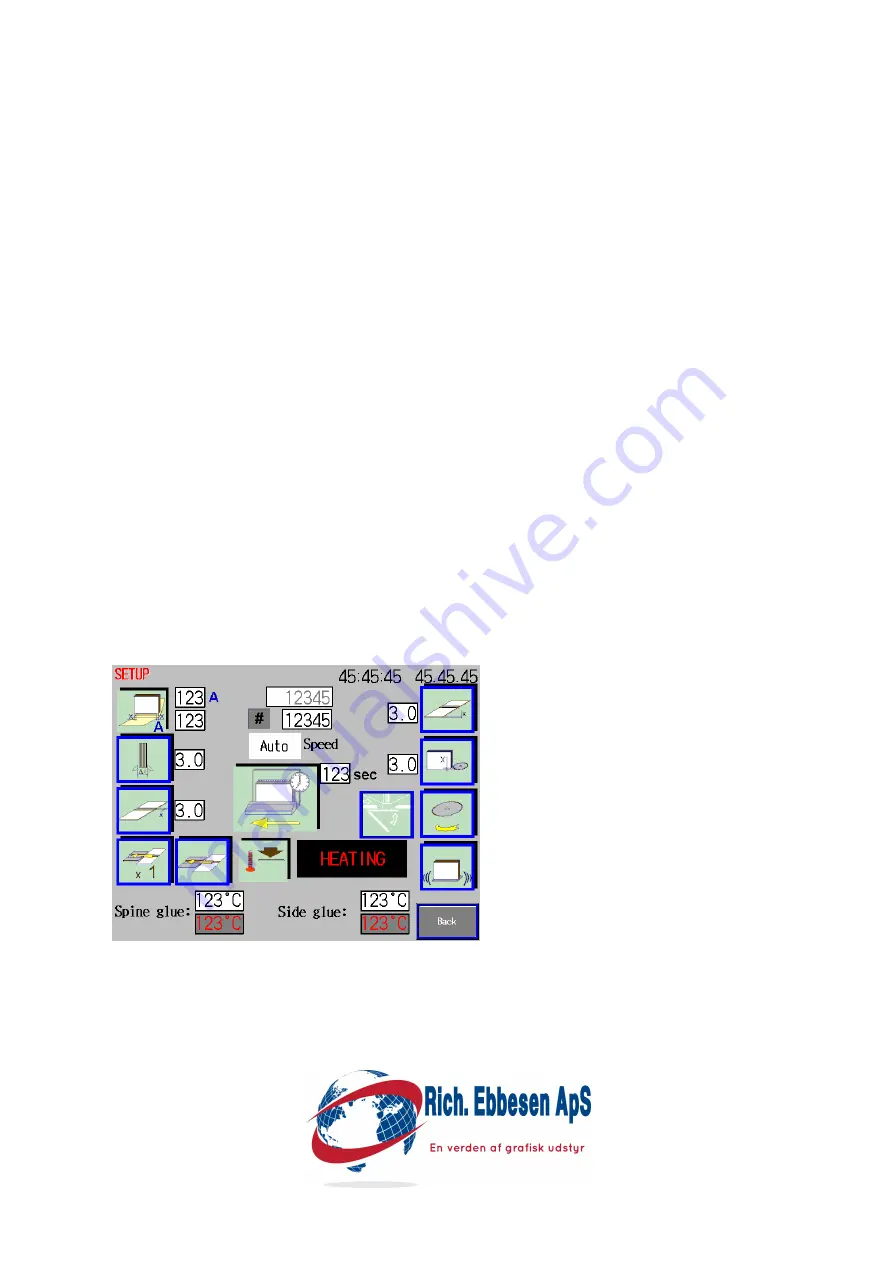
42
- the glue roller applies the glue on the spine of the book. There are 3 rollers in the
glue tank. Two big rollers and one small roller. The first roller is upper than the
second one. This is because the role of the first roller is to put the glue in the holes
made on the spine by the slitting knives. The second roller is putting an other layer
between the spine and the cover sheet. This has to be always more than the needed
amount. The third roller is to remove the glue being over the needed amount. The
gluing length of the spine can be adjusted. Please refer to the section “The working
and actuation of the machine”.
- after the carriage clamp with the document body arrives at the right final end
position (and over the binding unit) the carriage clamp goes down, the binding unit
closes and presses the cover sheet on the glued spine.
- when the setted binding time period is over, the binding unit opens, the carriage
clamp goes up, the steel plate of the binding unit opens and the carriage clamp
releases the book, which falls down across the chute on the stacker unit.
- the carriage clamp returns to the left end position and the next binding cycle can be
started.
If cover feeding is allowed and side gluing adjustment is finished (side-gluing wheels
are adjusted); cover feeding happens.
On the Perfect Binder 420 it is
possible to set the speed of the
carriage clamp during binding
operation. The reason of it is that it
can happen that the user is not
satisfied with the binding quality
and with its function he has the
opportunity to increase the quality.
There are 3 speeds integrated into
the program of the machine. The
first is “Auto.”which means that
when the machine measured the
book thickness in the clamp it
selects the optimal speed according to the real thickness. The second one is “Low”
which can be choosen. This is suitable when the book is very thick or the signatures
are digital printed, glossy paper which requires more slitting grooves. then “High”
speed which is good when the operator needs to bind big volume.






























